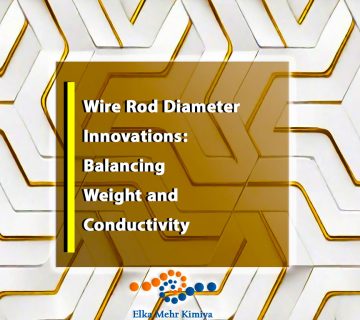In the intricate dance of global economics, few performances have been as dramatic and consequential as the China–United States trade war. What began as a series of strategic tariff impositions in early 2018 has morphed into a multifaceted conflict that has reshaped international trade dynamics, influenced political landscapes, and left an indelible mark on businesses and consumers worldwide. Join us as we journey through the origins, key developments, profound impacts, and future prospects of this monumental trade dispute.
Table of Contents
- Setting the Stage: Origins of the Trade War
- Escalation: Key Developments and Milestones
- Economic Impacts: A Tale of Two Giants
- Global Ripples: The Worldwide Repercussions
- Beyond Economics: Political and Strategic Ramifications
- Navigating the New Normal: Biden Administration’s Approach
- Looking Ahead: Future Prospects and Resolutions
- Final Thoughts: Lessons and Reflections
1. Setting the Stage: Origins of the Trade War
Imagine two economic titans, the United States and China, locked in a high-stakes chess match where each move has far-reaching consequences. The seeds of the China–United States trade war were planted in January 2018, under the watchful eye of U.S. President Donald Trump. Frustrated by what he perceived as unfair trade practices, President Trump sought to recalibrate the bilateral trade relationship to favor American interests.
The Catalysts:
- Trade Deficit Concerns: The U.S. consistently ran a significant trade deficit with China, peaking at approximately $375.6 billion in 2017. This imbalance was attributed to China’s competitive manufacturing sector and aggressive export strategies, which the U.S. argued disadvantaged American industries.
- Intellectual Property (IP) Theft: The Trump administration accused China of rampant IP theft and forced technology transfers. American companies were allegedly coerced into sharing proprietary technologies as a condition for accessing the Chinese market, undermining innovation and economic competitiveness.
- Economic Nationalism: Trump’s “America First” policy aimed to protect domestic industries and reduce dependency on foreign manufacturing. This approach resonated with voters concerned about job losses in sectors like manufacturing and agriculture.
Strategic Objectives:
The Trump administration’s strategic objectives were clear: impose tariffs to pressure China into altering its trade practices, protect American jobs, and level the playing field for U.S. businesses. This bold move set the stage for what would become a prolonged and intense economic conflict.
2. Escalation: Key Developments and Milestones
What started as targeted tariffs quickly spiraled into a full-blown trade war, with each side responding in kind. The escalation was not just about economic numbers; it was a battle of wills, strategies, and national interests.
Major Milestones:
- March 2018: President Trump announced tariffs on $50 billion worth of Chinese goods, including electronics, machinery, and consumer products. This marked the official start of the trade war and sent shockwaves through global markets.
- April 2018: China retaliated by imposing tariffs on 128 U.S. products, including soybeans, automobiles, and aircraft. The agricultural sector, particularly American farmers, felt the sting immediately as exports to China plummeted.
- July 2018: The U.S. imposed a 25% tariff on an additional $34 billion of Chinese goods, prompting China to respond with similar tariffs on U.S. imports. This tit-for-tat escalation intensified the economic conflict.
- September 2018: In a bold move, the U.S. announced a 25% tariff on $200 billion worth of Chinese imports, set to increase to 25% by the end of the year. China swiftly retaliated with tariffs on $60 billion of U.S. goods, covering a broad spectrum from agricultural products to manufactured goods.
- December 2019: After over a year of heightened tensions, the Phase One Trade Deal was signed in Washington D.C. China agreed to purchase $200 billion of U.S. goods over two years and address some of the IP concerns. However, the deal fell short of resolving deeper structural issues, leaving the door open for continued tensions.
Biden Administration’s Actions:
With the inauguration of President Joe Biden in January 2021, there was anticipation of either a thaw or further tightening in the trade relations. Biden opted for a balanced approach—maintaining many of Trump’s tariffs while introducing new restrictions targeting Chinese technology firms and expanding tariffs on specific sectors like electric vehicles and solar panels. This strategy aimed to sustain pressure on China while aligning trade policies with broader national security and economic goals.
3. Economic Impacts: A Tale of Two Giants
The trade war’s economic impacts are a complex tapestry of gains and losses, winners and losers, affecting millions of lives on both sides of the Pacific.
United States:
- Consumer Prices: Tariffs inevitably led to higher prices for imported goods. American consumers saw price hikes on everything from smartphones to clothing, as retailers absorbed or passed on the increased costs.
- Agricultural Sector: Perhaps the most visibly impacted were American farmers. With China imposing tariffs on soybeans, pork, and other agricultural products, farmers faced devastating revenue losses. The U.S. government introduced aid packages to support struggling farmers, but the damage was substantial, leading to increased farm bankruptcies and financial instability in rural communities.
- Manufacturing and Employment: While tariffs were intended to protect domestic manufacturing, the reality was more nuanced. Some manufacturing sectors saw growth as tariffs made Chinese goods more expensive, but overall job losses occurred in industries reliant on global supply chains. The uncertainty and increased costs led many businesses to delay investments and hiring, stalling economic growth.
- Supply Chain Adjustments: The trade war forced American companies to rethink their supply chains. Many sought alternative sourcing options outside of China, leading to increased production costs and operational complexities. This shift not only impacted profitability but also raised questions about the resilience of global supply networks.
China:
- Economic Growth: The trade war contributed to a slowdown in China’s economic growth, which was already grappling with internal challenges such as high debt levels and demographic shifts. The additional pressure from U.S. tariffs exacerbated these issues, leading to reduced industrial output and sluggish GDP growth.
- Export Declines: Chinese exporters faced declining demand from the U.S. market, particularly in high-tech and consumer goods sectors. This decline affected everything from electronics manufacturers to textile producers, impacting employment and investment in these industries.
- Shift Towards Self-Reliance: In response to the trade war, China accelerated initiatives like “Made in China 2025,” aiming to bolster domestic industries and reduce reliance on foreign technology. This strategic pivot focused on developing capabilities in critical sectors such as semiconductors, telecommunications, and renewable energy, positioning China to better withstand future trade pressures.
- Supply Chain Realignment: Similar to the U.S., Chinese companies had to diversify their supply chains to mitigate tariff impacts. This involved increasing production in other Asian countries and seeking new markets to sustain export volumes, further integrating China into a broader regional economic network.
4. Global Ripples: The Worldwide Repercussions
The China–United States trade war was not a contained conflict; its effects rippled across the globe, altering trade patterns, economic forecasts, and international relations.
Supply Chain Disruptions:
- Diversification of Manufacturing: Companies worldwide scrambled to diversify their manufacturing bases to avoid tariffs, leading to increased production in countries like Vietnam, India, Mexico, and Indonesia. This shift not only altered the economic landscapes of these nations but also introduced new challenges in logistics and quality control.
- Cost Increases and Inefficiencies: The realignment of supply chains introduced additional costs and inefficiencies. Businesses faced higher transportation expenses, longer lead times, and complexities in managing multiple production locations. These factors affected profitability and competitiveness, especially for small and medium-sized enterprises.
International Trade Relations:
- World Trade Organization (WTO) Challenges: Both the U.S. and China filed complaints with the WTO, highlighting the organization’s struggles to mediate modern trade disputes effectively. The WTO’s traditional mechanisms were often ill-equipped to handle the strategic and multifaceted nature of the trade war, raising questions about the future of global trade governance.
- Alliances and Partnerships: Countries around the world had to navigate their relationships carefully, balancing economic ties with both the U.S. and China. This balancing act was particularly challenging for nations heavily reliant on trade with both economic powerhouses, leading to strategic recalibrations in their foreign policies and trade agreements.
Economic Growth Forecasts:
Global economic growth forecasts were revisited downward as the trade tensions contributed to increased uncertainty and reduced investment. The International Monetary Fund (IMF) and other economic institutions acknowledged the trade war’s role in dampening economic optimism, highlighting the interconnectedness of global economies and the far-reaching consequences of bilateral conflicts.
Trade Diversion Effects:
- Beneficiary Nations: Countries like Vietnam, India, Mexico, and Malaysia emerged as significant beneficiaries by filling the gaps left by reduced trade between the U.S. and China. These nations saw growth in sectors such as electronics manufacturing, automotive production, and agriculture as businesses sought alternative sourcing and production locations.
- Economic Vulnerabilities: While some countries benefited in the short term, the long-term sustainability of these gains remained uncertain. Continued trade tensions could lead to further realignments, potentially reversing some of the benefits experienced by these nations and introducing new economic vulnerabilities.
5. Beyond Economics: Political and Strategic Ramifications
The trade war’s impact extended beyond economic metrics, deeply influencing geopolitical strategies and domestic politics in both the U.S. and China.
Power Dynamics:
- U.S.-China Rivalry: The trade war epitomized the broader struggle for global economic and technological supremacy between the U.S. and China. This rivalry extended into areas such as military influence, technological innovation, and geopolitical alliances, defining the contours of 21st-century international relations.
- Technology Competition: Control over emerging technologies like 5G, artificial intelligence (AI), and renewable energy became central to the conflict. Both nations invested heavily in research and development to secure technological leadership, with significant implications for national security and economic competitiveness.
Domestic Politics:
- U.S. Elections: The trade war played a pivotal role in shaping voter sentiments, particularly among key constituencies such as farmers, manufacturing workers, and consumers. The economic uncertainties and job impacts became focal points in political campaigns, influencing electoral outcomes and policy debates.
- China’s Domestic Stability: The conflict bolstered nationalist sentiments within China, reinforcing support for the Chinese Communist Party (CCP) amidst economic challenges. The trade war provided the CCP with a rallying point to consolidate domestic support and divert attention from internal economic and social issues.
Strategic Alliances:
- Strengthening Alliances: The U.S. sought to strengthen alliances with other nations to counterbalance China’s influence. Multilateral partnerships within frameworks like the G7, ASEAN, and other international coalitions gained prominence as the U.S. aimed to build a united front addressing common economic and security concerns related to China.
- Global Governance: The trade war exposed vulnerabilities in existing global governance structures, prompting discussions on reforming institutions like the WTO to better address contemporary trade challenges and strategic rivalries.
6. Navigating the New Normal: Biden Administration’s Approach
With the dawn of President Joe Biden’s administration in January 2021, the approach to the trade war took on new dimensions—maintaining continuity while introducing strategic shifts aimed at addressing evolving challenges.
Maintained Tariffs:
President Biden opted to retain many of the tariffs imposed by the Trump administration, signaling a sustained commitment to addressing unfair trade practices by China. This decision underscored the administration’s recognition of the structural issues within the U.S.-China trade relationship and the importance of maintaining pressure to drive policy changes.
New Restrictions:
- Technology and Security: The Biden administration introduced new measures targeting Chinese technology firms, citing national security concerns. Companies like Huawei and Semiconductor Manufacturing International Corporation (SMIC) faced expanded restrictions aimed at protecting critical industries from foreign influence and potential security threats.
- Renewable Energy: Increased tariffs on solar panels and electric vehicle batteries reflected a strategic focus on sustainable technologies and reducing dependency on Chinese imports in these critical sectors. This move aligns with broader efforts to advance renewable energy infrastructure and promote green technologies within the United States.
Diplomatic Efforts:
The Biden administration has engaged in high-level negotiations to stabilize trade relations, emphasizing multilateral cooperation and alliances to counterbalance China’s economic influence. Diplomatic efforts have included working closely with allies to present a united front on trade issues and leveraging international partnerships to address common economic and security challenges posed by China’s rise.
Strategic Policies:
- Economic Resilience: Policies aimed at enhancing economic resilience have been prioritized, including investments in domestic manufacturing, research and development, and infrastructure. These measures seek to reduce vulnerability to external economic shocks and promote sustainable economic growth.
- Supply Chain Security: Efforts to secure and diversify supply chains have been intensified, particularly in sectors deemed critical for national security and economic stability. This includes fostering partnerships with allied nations to develop alternative supply chain routes and sources for essential goods and technologies.
7. Looking Ahead: Future Prospects and Resolutions
As of 2024, the China–United States trade war remains an unresolved and dynamic conflict, with both nations continuing to navigate complex economic and political landscapes. The future trajectory of this trade dispute is influenced by a multitude of factors, including political leadership, economic policies, and global geopolitical shifts.
Potential Pathways:
- Comprehensive Trade Agreements: Future negotiations may seek to address broader structural issues, including IP protections, market access, state subsidies, and regulatory transparency. Comprehensive trade agreements could provide a framework for resolving entrenched disputes and fostering more equitable trade relations.
- Multilateral Cooperation: Strengthening alliances with other countries could create a united front to negotiate more effectively with China. Multilateral cooperation within frameworks like the G7, ASEAN, and other international coalitions could enhance bargaining power and promote collective action on trade and economic policies.
- Technological Decoupling: Continued efforts to reduce technological dependencies may lead to a more fragmented global tech landscape. This decoupling could involve developing parallel technological ecosystems, investing in domestic innovation, and implementing stringent export controls to safeguard critical technologies.
Challenges Ahead:
- Economic Interdependence: Despite tensions, deep economic ties between the U.S. and China make complete decoupling challenging and potentially damaging to both economies. The intricate web of supply chains, investments, and trade relationships necessitates a nuanced approach to managing and mitigating conflicts without triggering widespread economic disruptions.
- Global Stability: Prolonged trade conflicts risk destabilizing global economic growth and could lead to broader geopolitical conflicts. Maintaining stability requires careful diplomacy, strategic economic policies, and collaborative efforts to address mutual concerns and interests.
- Domestic Political Pressures: Both nations face internal political pressures that influence their trade policies. In the U.S., shifts in political leadership and public opinion can impact the continuity and direction of trade strategies. Similarly, China’s domestic policies and economic priorities shape its approach to international trade relations.
Emerging Trends:
- Focus on Sustainability: There is an increasing emphasis on sustainable and resilient economic practices, driven by global concerns over climate change and environmental degradation. Integrating sustainability into trade policies could influence future negotiations and agreements between the U.S. and China.
- Digital Trade and Cybersecurity: The rise of digital trade and concerns over cybersecurity are likely to play a significant role in shaping future trade relations. Issues such as data privacy, digital infrastructure security, and the regulation of emerging technologies will be critical areas of focus.
8. Final Thoughts: Lessons and Reflections
The China–United States trade war underscores the intricate interplay between economics and geopolitics in the modern world. Originating from concerns over trade imbalances and unfair practices, the conflict has expanded to encompass broader issues of technological supremacy and global influence. The economic impacts have been profound, affecting consumers, businesses, and governments both domestically and internationally. As both nations continue to assert their interests, the trade war remains a pivotal issue with far-reaching implications for international trade, economic policies, and global stability.
Navigating the complexities of this trade conflict requires a nuanced understanding of both economic principles and geopolitical strategies. Stakeholders worldwide must stay informed and adaptable to mitigate risks and harness opportunities in this dynamic environment. The resolution of the China–United States trade war will not only shape the future of bilateral relations but also redefine the contours of global economic governance and cooperation in the years to come.
















No comment